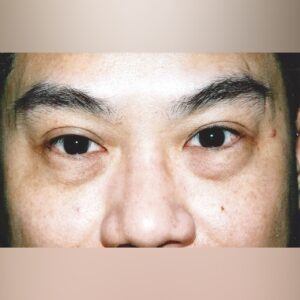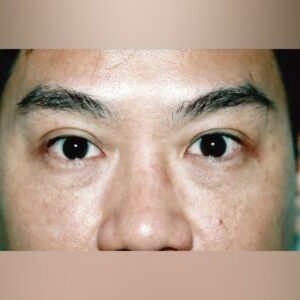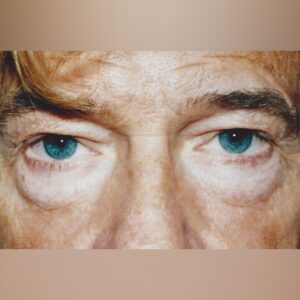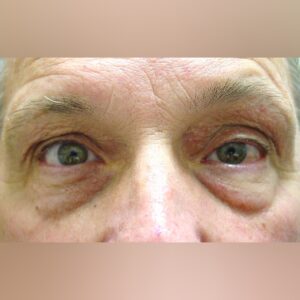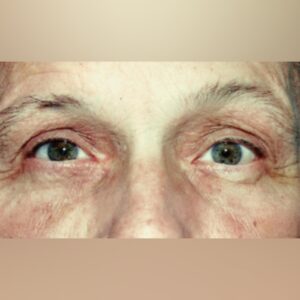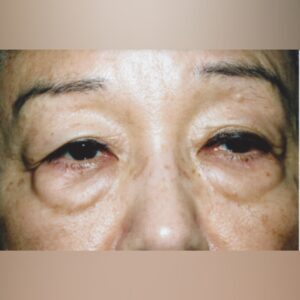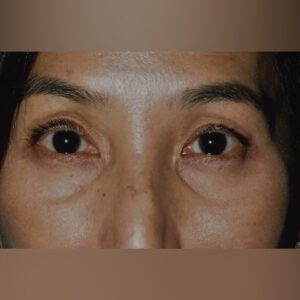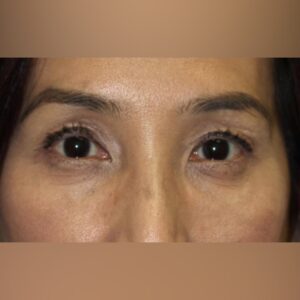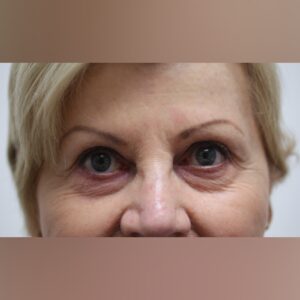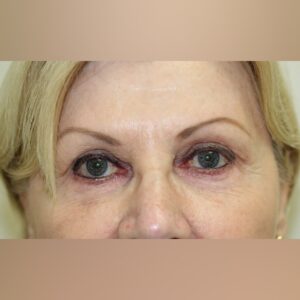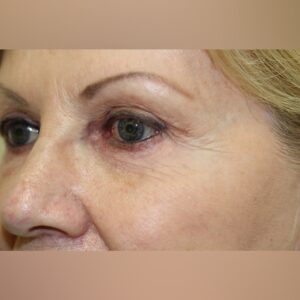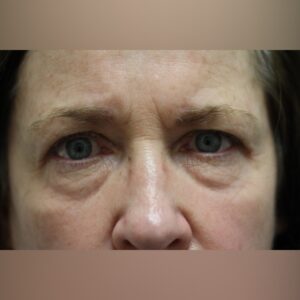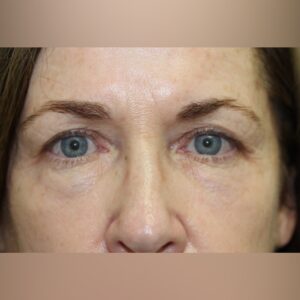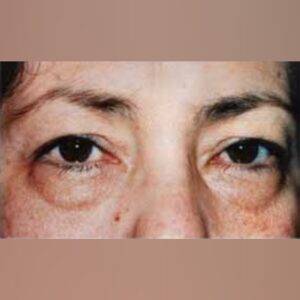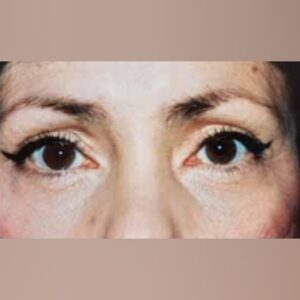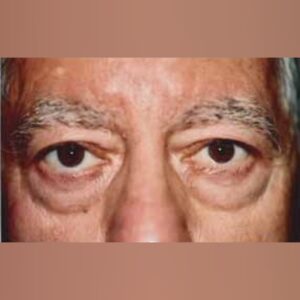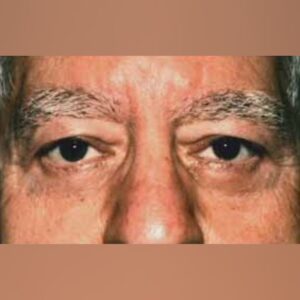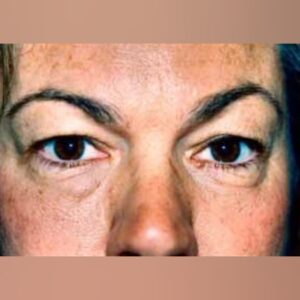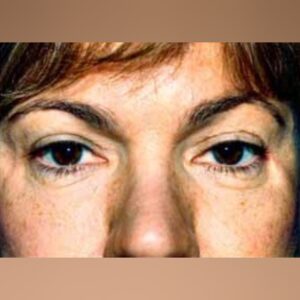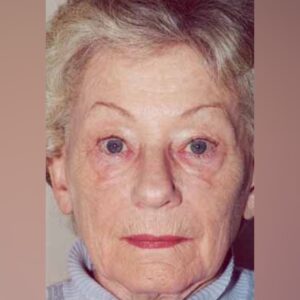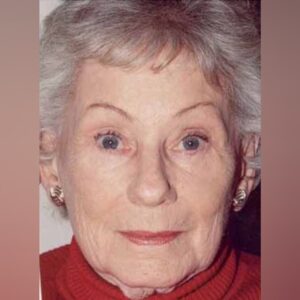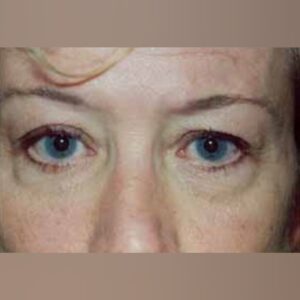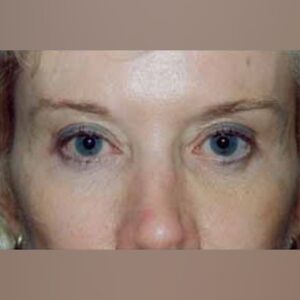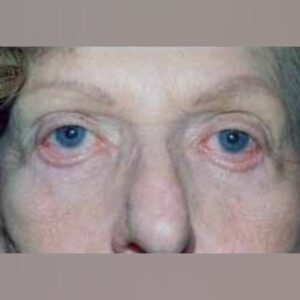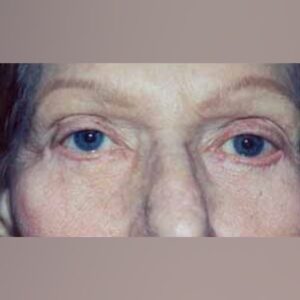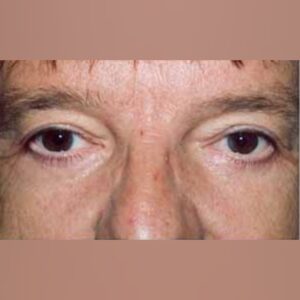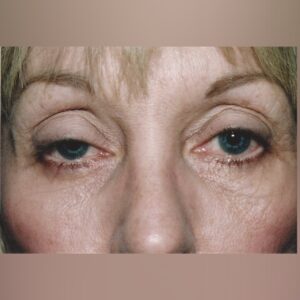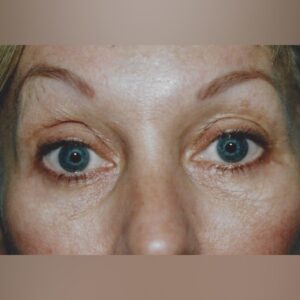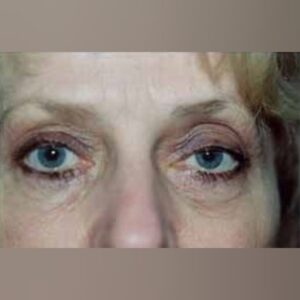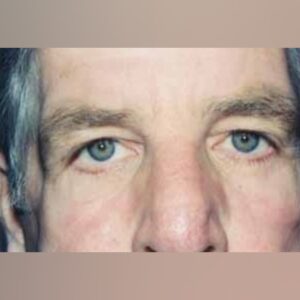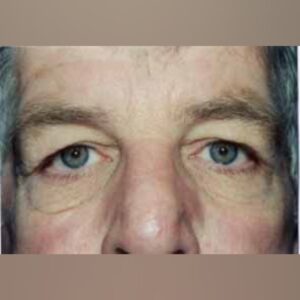Lower Eyelid and Upper Cheek or Mid-Face Surgery
When considering surgery of the lower eyelid, also consider the upper cheeks since the two areas are in continuity with each other. Aging conditions of the lower eyelid that can be corrected may include puffiness of the lower eyelid, wrinkling or even folds of excess skin and looseness, or horizontal laxity of the lower eyelid margin. The upper cheek fat tends to descend and thin with age. This can leave a hollow immediately under the lower eyelid. Laterally, the cheek fat drops and the skin may bunch over the cheekbone, sometimes even collecting a pocket of fluid where it bunches. Each of these problems may require a different procedure to correct them.
Note: You may click on any image below in this article to enlarge and view the description.
Lower Eyelid Transconjunctival Blepharoplasty with Fat Repositioning
This is a procedure used to treat puffy lower eyelids with hollows below. In many patients, the upper cheek fat has dropped and thinned, leaving a hollow that accentuates the appearance of puffiness in the lower eyelids. This surgery is performed from the backside of the eyelid without a skin incision. The fat is repositioned in to the hollow filling it out and flattening the eyelid contour. Because the fat is still connected to its original blood supply, it does not tend to lose volume after surgery, unlike free fat transfer procedures.
Filler (To Fill In Hollows Below Lower Eyelid)
If there are hollows below, but no puffiness or fat prolapse in the lower eyelids, it is better to inject filler to fill out the hollows. In this location, hyaluronic acid fillers can last two to three years.
Lower Eyelid Transconjunctival Blepharoplasty with Fat Removal
This surgery is used to remove puffiness, or bags, of the lower eyelid. This puff, or orbital fat, is fat which has prolapsed forward due to a weakening of the septum of the eyelid; a membrane that normally holds the fat back. The fat is removed with no skin incision, from the backside of the eyelid. No sutures are needed. Due to volume loss, the skin might be slightly looser and need a tightening procedure.
Lateral Mini Mid-Face Cheek Lift
This procedure is used to lift the drooping tissue of the upper cheek. The cheek fat pad is normally at the upper edge of the cheekbone. Over time, there may be loosening of tissue and loss of cheek fat so the tissue bunches over the lower part of the cheek bones; it may also collect fluid. This fat pad and some of the tissues that support it can be surgically lifted, smoothing out the bunching and moving that fat of the upper cheek upward. This is done through an incision in one of the pre-existing smile lines at the outer corner of the eye. If it is done in conjunction with upper eyelid blepharoplasty, the upper eyelid incision can be continued in to one of the smile lines and then the upper cheek can be lifted through that incision.
Mid-Face Cheek Lift
This procedure has also been called SOOF Lift (a sub-orbicularis ocular fat pad lift) and is used to lift a drooping upper cheek and lower eyelid. Often, there is insufficient lower eyelid skin, sometimes because of previous surgery or from a procedure or condition that tightened the skin. Therefore, when the cheek drops it pulls the eyelid down with it. To correct this, an incision is made through the back side of the eyelid and the upper cheek fat pad is pulled up. This elevates the cheek and takes its weight off the eyelid, allowing the eyelid to return to its normal position.
Canthoplasty (Tightening at The Outer Corner)
A normal, healthy lower eyelid margin rests at the lower edge of the cornea, or colored portion of the eye. With time, most eyelids stretch horizontally, lose their elasticity and get loose. The outer corner of the eye, the lateral canthus, may slip away from its normal attachment to the bone. In its normal healthy position, the eyelid is best able to protect the eye, keep the cornea moist, and help the tears drain in a normal fashion. If the eyelid is horizontally loose, it may sag down out of the ideal position often resulting in an irritated, tearing eye. The risk of this is increased when someone has had surgery or a procedure on the skin of the lower eyelid.
If a patient with horizontally loose eyelids is planning to have a procedure on his or her lower eyelid skin, a canthoplasty and prophylactic tightening of the eyelid at the outer corner is advisable. This surgery is necessary if the eyelid sags so much that it is unsightly or results in tearing and/or irritation of the eye. A canthoplasty is performed using a small incision at the outer corner of the eye extending less than one centimeter into a smile line. The lateral canthus is reattached to its previous attachment place at the lateral orbital rim. The lower eyelid may need to be shortened as well. This usually heals with minimal evidence of a previous incision.
Lower Eyelid Blepharoplasty With Skin Removal
If a patient has excess skin in the lower eyelids, some skin may need to be removed. This skin can be removed using an incision that is hidden in the normal crease just below the eyelashes. Although this procedure used to be the common way lower eyelid surgery was performed, it is more rarely performed in current times. It is needed if there are folds of excess skin, not just wrinkles, in the lower eyelids. Because this procedure has the risk of pulling the eyelid down and out of position, most patients will also need to have a lateral canthoplasty performed to tighten and hold the eyelid margin in proper position during healing.

